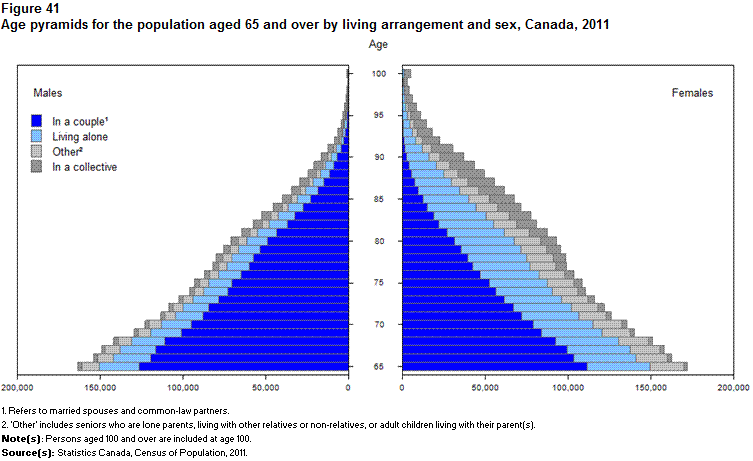Living in a couple the most common arrangement for seniors
- According to data from the 2011 Census, the majority of the population aged 65 and over lived as part of a couple (56.4%). This proportion was slightly higher than in 2001 (54.1%). Living in a couple declines with age, from 7 persons in 10 among those aged 65 to 69 in 2011, to 1 in 5 among those aged 85 and over. The prevalence of living in a couple was also higher for senior men (72.1%) than for senior women (43.8%) in 2011, as senior women were proportionally more likely to live alone, with other persons or in a collective dwelling.
- These male-female differences are partly due to the fact that the life expectancy of males is lower than that of females, and to the tendency of women to form unions with older spouses or partners. Also, men tend more often than women to enter into a new union after the breakdown of a union or the death of their spouse or partner.
- In 2011, nearly one-quarter of the population aged 65 and over lived alone (24.6%), down from 2001 (26.7%). Between 2001 and 2011, the proportion of women aged 65 and over living alone decreased, while the proportion of senior men living alone remained relatively stable. The decline for women may be explained by the fact that men have registered larger gains in life expectancy than women in recent decades. Women aged 65 and over were therefore proportionally more likely than previously to live in a couple at more advanced ages.

Description for figure 41
